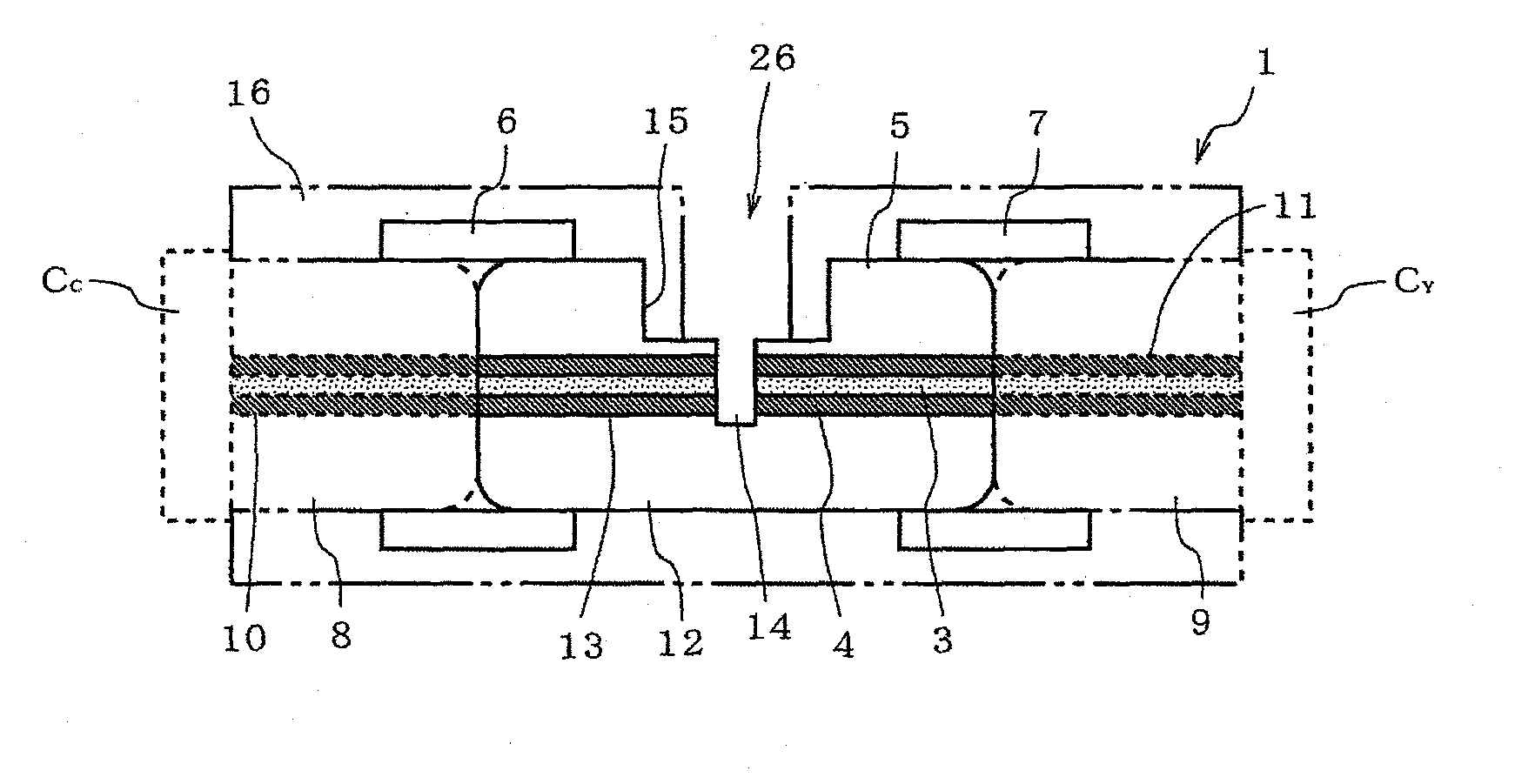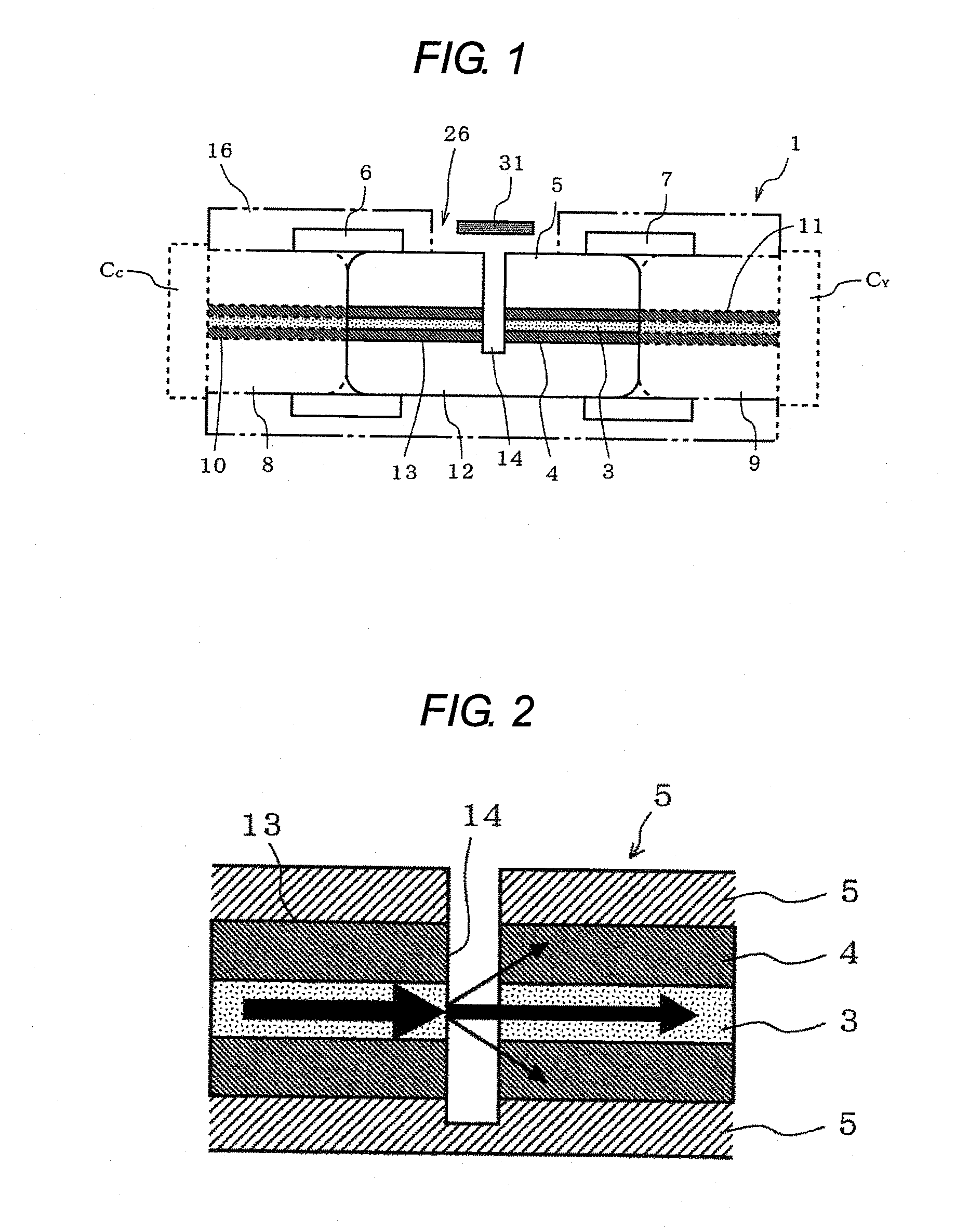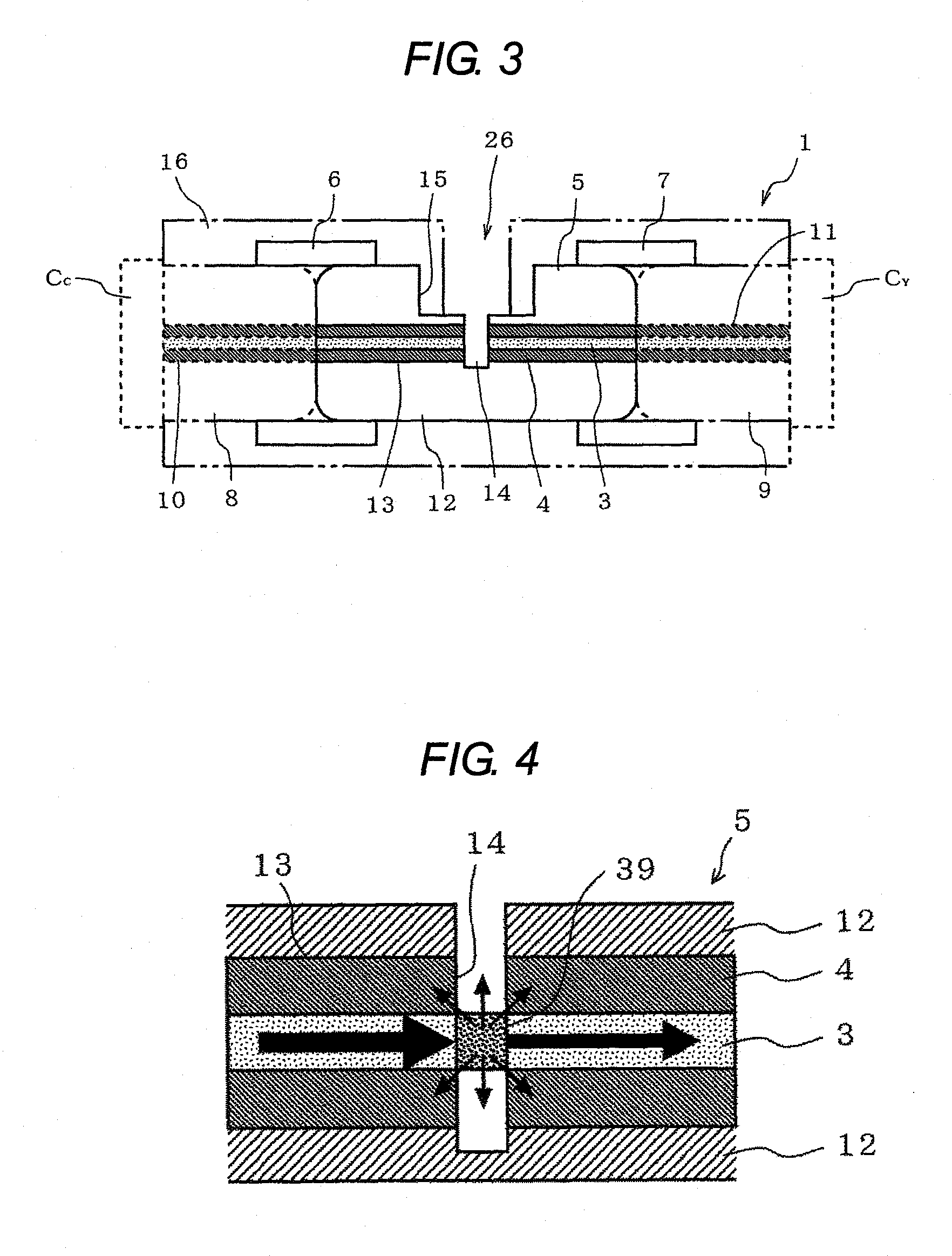Optical connector
a technology of optical axis alignment and optical axis alignment, which is applied in the field of optical connectors, can solve the problems of high precision time-consuming operation in device fabrication, and the above-stated arts in patent literature still have problems, so as to achieve high accuracy in optical axis alignment and efficient pick up
- Summary
- Abstract
- Description
- Claims
- Application Information
AI Technical Summary
Benefits of technology
Problems solved by technology
Method used
Image
Examples
first embodiment
[0048]FIG. 1 is a schematic sectional view of an optical connector in the present invention.
[0049]As FIG. 1 illustrates, an optical connector 1 is a device that optically connects optical transmission lines each other, picks up part of the communication signal light, and outputs the picked up communication signal light to a light-reception component 31 of a light detector 2 (FIG. 1 illustrates part of the light detector 2). The light detector 2, details of which will be described later, is a device for detecting the picked up communication signal light. As the light detector 2 has a structure separate from the optical connector 1, the light detector 2 is attached on the optical connector 1 in a detachable manner. With this configuration, the optical connector 1 can be small-sized and further one light detector 2 is applicable commonly to a plurality of the optical connectors 1 greatly attributing to cost cutting.
[0050]The optical connector 1 has a joining element 5 inside a connecto...
second embodiment
[0093]An optical connector by the second embodiment is characterized in that part of the core 3 of the joining element 5 is partly given a longitudinal shape modification. More particularly, micro-bend (undulation) partly formed on the joining element 5 functions as the light pick-up means.
[0094]As illustrated in FIGS. 8A to 8C, a micro-bend 41 is an undulating portion formed on such a portion of the core 3 of the joining element 5 as faces the light reception component of the light detector.
[0095]Forming the micro-bend 41 on purpose on the core products a transmission loss of the communication signal light, in other words, generates leakage light. Detecting this leakage light with the light reception component 31 of the light detector 2 enables examination of existence of communication signal light.
[0096]The micro-bend 41 is formed by providing a hole having periodical bend in the ferrule 12 in which the optical fiber 13 is to be embedded and then inserting the optical fiber 13 int...
third embodiment
[0101]An optical connector by the third embodiment is characterized in that the light is picked up at the end face of the joining element 5 that is an optical connection interface with the optical transmission line. More specifically, such optical connection is constituted in a manner, wherein the insertion hole of the ferrule 12, into which the optical fiber 13 is to be inserted, is positioned at a location shifted from the inline position of the holes of the ferrules 8 and 9 to be connected, as illustrated in FIG. 10A, and thereby the optical connection is established at the connecting point (connecting end faces) of the ferrule 12 with the optical axis of the core (the core 3) of the optical fiber 13 shifted from the optical axes of the optical fibers 10 and 11 of the transmission line. In FIG. 10A, the shift of the hole of the ferrule 12 is illustrated upwards in the figure; however, shifting downwards in the figure is also feasible.
[0102]Instead, it is practicable to cause the ...
PUM
 Login to View More
Login to View More Abstract
Description
Claims
Application Information
 Login to View More
Login to View More - R&D
- Intellectual Property
- Life Sciences
- Materials
- Tech Scout
- Unparalleled Data Quality
- Higher Quality Content
- 60% Fewer Hallucinations
Browse by: Latest US Patents, China's latest patents, Technical Efficacy Thesaurus, Application Domain, Technology Topic, Popular Technical Reports.
© 2025 PatSnap. All rights reserved.Legal|Privacy policy|Modern Slavery Act Transparency Statement|Sitemap|About US| Contact US: help@patsnap.com



